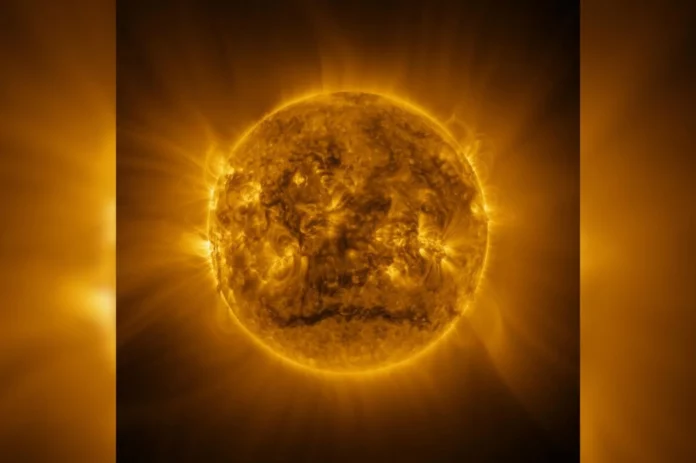Five years into its mission, NASA and ESA’s Solar Reconnaissance Orbiter has just captured the clearest and most detailed image of the Sun ever seen by mankind.
The image above – in all its mesmerizing, dull yellow majesty – captures the million-degree corona of our Sun in ultraviolet light.
Captured on March 9, 2025, from a distance of approximately 47.8 million miles (77 million kilometers), this image is not just a pretty picture. It is actually a mosaic stitched together from 200 separate images of the Sun, each taken by the Extreme Ultraviolet Imager (EUI) spacecraft. The result is a megaportrait measuring 12,544 by 12,544 pixels, which can be zoomed in (on the ESA website) and out like never before.
As detailed on the website, the image shows some of the fundamental components of our solar host. The tendrils coming out of the sphere are the solar atmosphere – the corona – with wavelengths that go far beyond what is visible to our eyes. Closer to the surface of the Sun are dark, filamentous prominences – solar plasma that flares up under the influence of the Sun’s magnetic field. The temperature of these prominences is approximately 18,000 degrees Fahrenheit (10,000 degrees Celsius), which is far from the million-degree corona.
The dark streak across the front of the Sun that makes it look like an ominous, fiery scowl is the solar filament. The brighter spots on the face of our star are active regions on its surface – the source of solar flares and coronal mass ejections, and on the right side of the star you can see coronal loops that are also bent by the magnetic field.
The Solar Orbiter mission is part of a larger effort to decipher the chaotic dynamics of the solar atmosphere – including how magnetic fields twist, flare, and sometimes cause solar storms that can disrupt satellites and power grids on Earth.
While this image is dazzling to the naked eye, it is also rich in data for researchers seeking answers to questions about solar heating, plasma behavior, and space weather forecasting.
But let’s be real: it’s also pretty damn cool. We sent a spacecraft close enough to the Sun to capture its hot winds and live to tell the tale. In addition, it thanked us with beautiful high-resolution images. Hang it in the Louvre.









